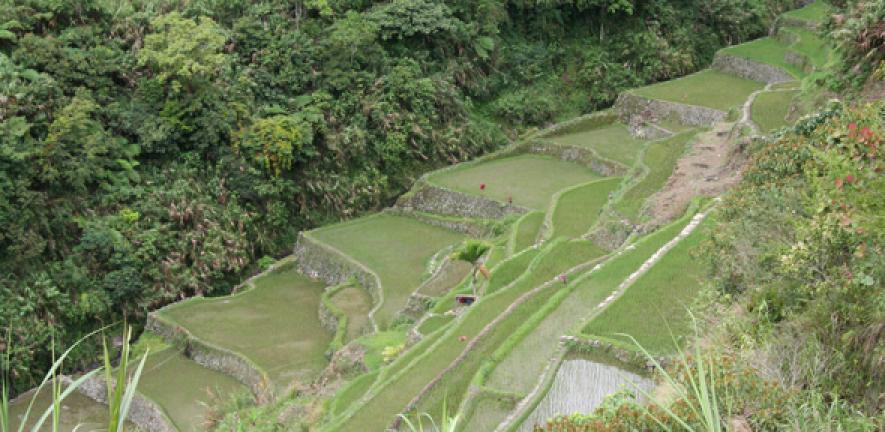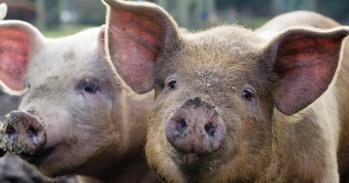
A breakthrough in understanding the evolutionary pathways along which some crops have become significantly more productive than others may help scientists boost yields of some staple foodstuffs.
A breakthrough in understanding the evolutionary pathways along which some crops have become significantly more productive than others may help scientists boost yields of some staple foodstuffs.
What their work reveals provides incredible new insight into a complex evolutionary process
Julian Hibberd
Research carried out at Cambridge and Oxford Universities, and published last week in the journal eLIFE makes an important contribution to worldwide efforts to develop high-yielding crops by mimicking the natural processes of evolution that have led some plants to be more productive than others.
Crops can be divided into two broad categories in terms of the way in which they use photosynthesis to convert sunlight and water into carbohydrates. In C3 plants carbon dioxide is first fixed into a compound containing three carbon atoms while in C4 plants carbon dioxide is initially fixed into a compound containing four carbons atoms.
This seemingly minor variation in photosynthesis makes an important difference: C4 plants are around 50% more efficient than C3 plants, and despite accounting for just 3% of plant species, C4 plants contribute 30% to terrestrial productivity.
The world faces pressure from a growing population, and productive land is increasingly at a premium. One way to improve yields without cultivating more land is to engineer crops to use C4 photosynthesis. To do this, scientists must understand the evolutionary steps that lead from C3 to C4 photosynthesis.
Most C4 plants are native to tropical and sub-tropical regions. They include maize, sorghum, millet and sugarcane. Rice, a crop vital to the nutrition of huge numbers of people across the world, is a C3 plant, which explains why there is a big push to develop a C4 rice with enhanced yield.
All C4 plants evolved from C3 plants. Scientists think that this process took place over many millions of years. No one knows exactly what causes the sequence of changes that makes it possible for plants to learn this trick, and although the C4 pathway is considered highly complex, this system has evolved independently in many groups of plants.
A collaboration bringing together plant sciences and mathematics initiated by Drs Ben Williams and Iain Johnston has revealed the series of events that allowed plants using the C4 pathway to evolve from C3 plants.
Their work on evolutionary pathways may help scientists to engineer current C3 crops to use the more efficient C4 pathway and because of their increased productivity, increase world food security. In doing so, scientists will be mimicking and speeding up the natural variations that have taken place in wild species.
When they embarked on their study two years ago, Williams was a PhD student in the Department of Plant Sciences at Cambridge University and Johnston was a graduate student in Oxford University’s Physics Department. They had met during their undergraduate studies.
“I can distinctly remember Ben coming into my office one morning and explaining that he had an idea for part of his PhD thesis. He also suggested that my feedback might be that this idea was not a good one,” said Dr Julian Hibberd, who was Williams’ PhD advisor at the Department of Plant Sciences, Cambridge.
“What Ben was suggesting was highly ambitious, and melded plant sciences with advanced mathematics. I was not 100% sure about his proposal - one never can be with a new research project. However, I liked the smell of it, so I encouraged him to go ahead. Ben and Iain turned their idea into a genuinely exciting and ground-breaking piece of work.”
Williams assessed the presence or absence of 16 traits known to be important for the C4 pathway in 73 different plants, some using C4 photosynthesis, some using the C3 pathway, and others that seem to use a blend of both C3 and C4. Johnston then developed Bayesian modelling techniques, to produce a model that predicts the steps associated with this highly complex evolutionary process. The model was underpinned by data occupying a 16-dimensional space with 65,536 nodes within that space.
Dr Hibberd said: “What their work reveals provides incredible new insight into a complex evolutionary process and furthermore is essentially positive news for those of us interested in engineering more productive staple food stuffs such as rice. This is because the work shows that there is significant flexibility in the evolutionary paths that plants have used to get from C3 to C4 photosynthesis.
“This finding therefore implies that the engineering effort is not constrained to only one route. This should help scientists to develop crops with significantly improved yields to feed the world. Like the proverbial roads that all lead to Rome, Ben and Iain have shown that there are many routes taken by plants in the evolutionary process towards C4 photosynthesis.”
For more information on this story contact Alex Buxton, Office of Communications, University of Cambridge, amb206@admin.cam.ac.uk 01223 761673
Inset image: C4 maize illustrated by Ninghui Shi, Clare College, Cambridge
This work is licensed under a Creative Commons Licence. If you use this content on your site please link back to this page.





